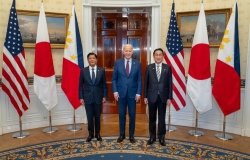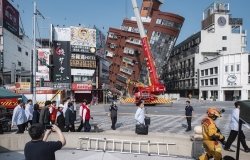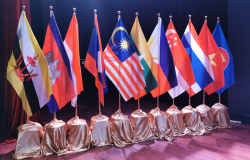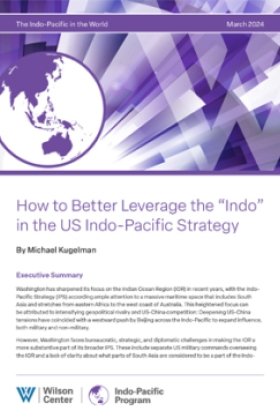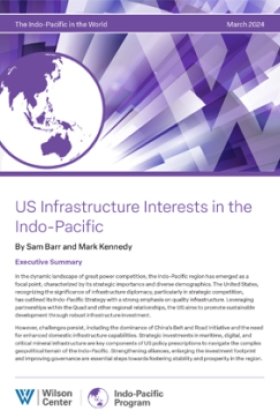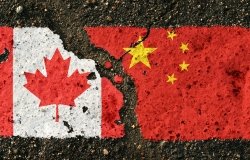The Urban Movement and the Planning and Execution of the Tet Offensive
Sohpie Quinn-Judge, "The Urban Movement and the Planning and Execution of the Tet Offensive ," review of Lịch sử Nam bộ kháng chiến (History of the Southern Resistance), edited by Hội Đồng Chỉ Đạo Biên Soạn Lịch Sử Nam Bộ Kháng Chiến, Cold War International History Project, October 2014.
This history of the “Southern Resistance” incorporates a southern communist view of the wars for independence in Vietnam. Scholars who identify with the Republic of Vietnam (ROV) may not want to accept that this is an authentically southern view.[1] But for anyone interested in the National Liberation Front and who is willing to admit that it was at one time an influential force (a group including most Western scholars of the Vietnam War generation), this study has much useful information. Along with the three-volume study of the Resistance inWestern Nam Bo (2010), edited by Nguyen Thi Van and Dang Phong, this study helps to fill an important void in the Vietnamese literature on the southern and non-military aspects of the Vietnam War.[2] In a 1993 essay, Ngo Vinh Long commented that the southern veterans of the revolutionary war whom he had interviewed over ten years “have felt frustrated and slighted by the fact that the struggles of the people in the South have not been appropriately recognized in official accounts.” He goes on to say that, “many of those who operated in the urban areas—especially in Saigon—have told me that after the war they have been regarded with suspicion and have been marginalized, in part because of the incorrect official assessment of the role of the urban opposition during the war years.”[3]
This study certainly corrects those omissions in the official Vietnamese record. In chapter 5 of volume 2 of Lịch sử Nam bộ kháng chiến (LSNBKC), for example, there is section covering “The New Development of the Political Struggle and Armed Movements in the Urban Areas of South Vietnam,” after the fall of the Diem government.[4] In the year 1964 the urban movement played a major role in the strategy of the NLF and the communist party to prevent US entry into the War, or more precisely to prevent “special war” from developing into “limited war.” We learn that there was a push to create a “large quantity of political cadres of reliable quality” beginning in April 1964, with a meeting of the Saigon-Gia Dinh Zone Committee.[5] We also learn that gradually the revolutionary forces established control in the majority of legal and semi-legal organizations in Saigon-Gia Dinh. The authors claim that “cadres, leading party members and progressives found key positions in mass organizations, such as the General Student Union, the Committee of Representatives of High Schools, and the An Quang Buddhists.”[6]
This latter point is an interesting admission, if accurate. After the 1966 uprising in Central Vietnam was called off by Buddhist leader Thich Tri Quang, Le Duan had remarked in one of his Letters to the South that the lack of control over the “struggle movement” had been a weakness on the part of the communists.[7] So we should, perhaps, narrow that claim of control to mid-1966 and the end of the “Struggle Movement” in central Vietnam, when the Buddhist movement began to disintegrate. Of course, influential groups identified with the “Third Force” or “Third Segment” continued to exist in Saigon, led by non-communists such as the lawyer, Mrs. Ngo Ba Thanh. Catholic-supported peace organizations and publications also flourished, with support from progressive movements within the worldwide Church.
But in general, the recognition that the urban political struggle played a major role in the early years of the War, and that the students were the “spark” of this movement, creates a more realistic picture of the South Vietnamese opposition than has been presented in many histories of the War. In my opinion, the communists could not have won the second Vietnam War without the urban opposition to make visible to the Western press the depth of popular anti-war feeling among intellectuals and the middle class. The peasant war in the Mekong Delta was the key component of southern Vietnamese resistance, but its urban, political voices were also essential for its success. The slogans that these voices endorsed, including the NLF program, were decided mainly by the communist leadership. But as Le Duan explained to the Central Committee in 1968, they were designed to have a broad appeal to the population.[8] Moreover, the political personalities who presented these ideas to the public were often non-communists.
The role of the urban intelligentsia would continue to be essential to the success of the Southern Resistance. However, in 1967-1968, there appears to have been disagreement in Hanoi over how much responsibility they should be assigned in the plans for the Tet Offensive. My hypothesis is that the role of the urban supporters of the NLF, many of whom were middle class students and professionals, was regarded with suspicion by the more radical class-warriors of the Party Politburo and Secretariat, who believed that only a violent military victory could bring about the revolution that they fought for. (By January 1968, following the arrests and tightening political climate of the Anti-Party Affair in Hanoi, this group had the upper hand in Politburo.[9]) This insistence on a “violent military victory” was also the clearly stated view of Chinese leader Mao Zedong, who feared any signs of negotiation between the Vietnamese and the Americans.[10]
On the other hand, Workers’ Party First Secretary, Le Duan, called for a “decisive victory,” but at the same time made it clear in his January 1968 speech to the Central Committee that his plan was to fight for a coalition government and negotiations. One can see in his speech, the only one by a Politburo member at the 14th Plenum published in the volume of Party Documents for 1968, that he was arguing in support of the potential of the urban opposition. “From the time that the Buddhist movement failed, the leadership belonged to us,” he claimed. “Now we have done our research—the Saigon movement, from beginning to end, is violent. The political struggle movement in Saigon is violent…”[11] These forces were not simply reformists who wanted to take power in a military coup.
Although Le Duan was the most visible designer and defender of the planned General Uprising (tong khoi nghia) for the urban areas in 1967-1968, one has to ask whether his political power was as absolute, as has been assumed by such scholars as Pierre Asselin. It appears that his argument did not receive total support. One of the most puzzling aspects of the planning for the offensive is that Hanoi changed its calendar for the start of the lunar New Year (Tet) at the last minute, so that troops directly under its command in the Central Highlands and the central provinces started their offensive one day ahead of the troops in the Mekong Delta and the military theater around Saigon. Volume two of LSNBKC makes this discrepancy in the starting date clear, and lists all the cities and areas where the uprising started later.[12] This change was announced to the troops in the Mekong Delta with just hours to spare before the General Offensive began. The earlier schedule made it impossible to stage the urban uprising in Saigon as planned, as the students who had been organizing a massive Tet celebration in downtown Saigon, opposite the Presidential Palace, could not carry out their well-rehearsed plans once the fighting had started.[13] Would Le Duan have been responsible for sabotaging his own plans for the General Uprising in Saigon? Or was the change of date for the offensive made without his knowledge? (The idea that the change of the calendar in the DRV was an innocent accident is inconceivable. Could an experienced army such as the PAVN have failed to communicate in advance on such a key issue?)
This leads to the question: was Le Duan the key military tactician of the Tet Offensive, or was he mainly the architect of the urban uprisings? Did other members of the leadership disagree with his support for popular uprisings in the cities of South Vietnam, to the point that his plans for political action were countermanded? This is a question that I was hoping to have answered as I read chapter seven of Lịch sử Nam bộ kháng chiến. As it turns out, there are no clear answers in the text, but there are some hints.
First of all, in this study, Le Duan is rarely cited in the description of the planning stages for Tet. Apart from one statement he made at the 12th Plenum in 1965, regarding the achievement of a “basic step towards victory,” I found only one remark on his role in the planning until his January 1968 speech.[14] This study gives Van Tien Dung, head of the General Staff, the lead in this process. He tasked the Military Operations Command with creating a plan for the Politburo and the Party’s Central Military Committee to examine. “Around September 1967, Anh Dung made it known: “You comrades must make an action plan for direct attack on the American and puppet nerve centers—Saigon, Hue, Danang, all the cities, towns and main bases.” Afterwards, when Anh Dung was questioned, it turned out that it was Anh Ba (Le Duan) who came up with this idea…”[15]
Second, LSNBKC endorses the version of the Tet decision-making schedule offered by southern leaders such as General Tran Van Tra and Tran Bach Dang. The text explains that “a clear understanding of the situation had been achieved by April 1967,” while in June 1967, the Politburo made a decision on a major offensive, that would involve a strong military and political advance into all cities and towns.[16] Then, at one meeting at the end of October and another at the beginning of December, 1967, the Politburo discussed the timing of the offensive.[17]Victory in Vietnam: The Official History of the People’s Army of Vietnam, 1954-1975, says clearly that at the October meeting, “the Politburo realized it was possible to carry out the plan earlier than we had initially planned. To achieve the element of surprise, the Politburo decided to launch the General Offensive during Tet 1968.”[18] Thus Tet Mau Than (The Year of the Monkey), became the shorthand for this major military offensive to attack the main cities and towns all over the South, in coordination with popular uprisings. This October Politburo meeting happened when Le Duan was in Moscow for the celebration of the fiftieth anniversary of the Bolshevik Revolution, and when General Giap and Ho Chi Minh were also absent. One objective of the change of timing may have been to preserve the secrecy of the offensive from the Soviet comrades, who were now seen as hopelessly revisionist and too close to the West. (In fact, at the end of 1967 the Soviet Ambassador in Hanoi was suspected of plotting with dissident elements of the DRV leadership. The Chinese leadership, moreover, had by June 1966 accused “pro-Kremlin revisionists” of infiltrating the DRV leadership, “producing a struggle between those who backed fighting until military victory…and those who favored talks to end the war quickly.” Zhou Enlai referred to Le Duan as someone who had “changed course.” “Until now he had been a leftist,” Zhou said.[19])
A third point that LSNBKC makes very clear is that the early date set for the offensive left the southern leaders and military commanders very little time to prepare. The result of the rushed planning was that it became impossible to meet all the ambitious goals for the offensive set in Hanoi. For example, in South Central Vietnam, the two centers for the uprising were to be Dalat and Phan Thiet—these two towns were to be taken over (dut diem). But the southern forces were not ready to achieve such an ambitious goal—“they had been given only enough time to prepare an ordinary campaign, and the conditions were not yet ripe…They could not be sure of achieving these goals, especially the capture of Dalat.”[20] Overall, their “thinking, planning and organization was still at a simple level, while there were many things that could not be done in time.” Then, when the date for the offensive to start—two am on the first day of Tet—was pushed forward by the calendar change, even those plans that had been carefully laid were thrown into confusion.
A fourth point that can be picked out from the chapter on the Tet Offensive is the importance accorded to youth and students in the plan for the urban uprising in Saigon. The actual offensive in Saigon fell far short of this scheme, and one wonders how many of the projected numbers of young people would have materialized if the calendar change had not thrown off their timing. According to this account, on 25 October, 1967, COSVN issued its Quang Trung Resolution on the General Offensive and General Uprising. This decision followed a visit earlier in October by General Nguyen Van Vinh, to inform the COSVN leadership of the program and timing for the offensive. Around this time the concrete aims for Saigon and the plan to develop the uprising were laid out. The eight objectives to be taken over included the General Staff Headquarters, Chi Hoa prison, the government radio station, Independence Palace and the US Embassy. For each of these targets an advance battalion was designated to move in from outside the city; in each case, with the exception of the US Embassy, a group of youth and students was to link up with the regular forces on the spot. For the General Staff, the youth group was to be 5,000 strong. At Chi Hoa, there were to be 1,000 youth on hand. The lowest number of youth projected for an objective was 200.[21]
The youth were divided into three groups: the Youth Group armed force (special forces), the armed political forces, and the legal (cong khai) political force. The role of the legal group was to “raise the flag for peace and neutrality” in order to gather various layers of the population such as intellectuals, patriotic personalities and religious dignitaries...”[22] There were also underground party members within the city, including 325 “loyal families” who were charged with finding 400 places to billet troops. These families helped to find the secret storage points located near each of the targets, where weapons smuggled into Saigon were hidden.[23]
By late 1967, LSKCNB makes clear, some criticisms of the Tet planning were entering the discussion. COSVN issued some directives at that time criticizing the “slow development of political forces.”[24] It seems that the head of COSVN Pham Hung, who had replaced Nguyen Chi Thanh in this position after his death, had his doubts. Before ‘Day N,’ the date set for the offensive, he informed all the secretaries of military regions that they should only make known one part of the offensive’s potential goals, that is to take over urban centers.[25] This cryptic piece of information does not say much about this step, only that it was intended to create the conditions for a more “flexible” defense.
The final section of chapter seven, covering the planning for Tet, admits that in spite of the optimistic (and largely correct) analysis of the challenges faced by the US in expanding the war, the balance of forces was still strongly against the communist side. Altogether, the US, its allies and the ROV had 1.4 million men in the battle zone, far exceeding the troop strength of the revolutionaries.[26] But at the same time, this analysis extolls the momentum and eagerness for victory inspired by the Tet goals, in particular the Quang Trung Resolution. This created a spirit that had not yet been seen during the anti-US war. It facilitated a massive movement of men and supplies towards Saigon, that made it possible to give the US a bad shock. In spite of the rushed and confused planning, even a critic of the offensive such as Tran Bach Dang is quoted as saying that “if the Tet Mau Than Offensive had not taken place in Saigon, then the offensive would not have had the guaranteed first-rank significance that it possessed.[27]
Click Here to Return to the Symposium on the History of Vietnam's Southern Resistance
[1] Hội Đồng Chỉ Đạo Biên Soạn Lịch Sử Nam Bộ Kháng Chiến, ed., Lịch sử Nam bộ kháng chiến, Tap 2: 1954-1975 (History of the Southern Resistance, Vol. 2, 1954-1975) (Hà Nội: Nhà xuất bản Chính trị quốc gia, 2010).
[2] Ban biên soạn lịch sử Tây Nam Bộ kháng chiến, ed., Lịch sử Tây Nam Bộ kháng chiến (Resistance in Western Nam Bo), 3 vols (Hà Nội: Nhà xuất bản Chính trị quốc gia-Sự thật, 2010).
[3] Ngo Vinh Long, “Post-Paris Agreement Struggles and the Fall of Saigon,” in The Vietnam War: Vietnamese and American Perspectives, ed. Jayne S. Werner and Luu Doan Huynh (Armonk, New York: M.E. Sharpe, 1993), 205.
[4] Hội Đồng Chỉ Đạo Biên Soạn Lịch Sử Nam Bộ Kháng Chiến, ed., Lịch sử Nam bộ kháng chiến, Tap 2, 343.
[5] Hội Đồng Chỉ Đạo Biên Soạn Lịch Sử Nam Bộ Kháng Chiến, ed., Lịch sử Nam bộ kháng chiến, Tap 2, 344.
[6] Hội Đồng Chỉ Đạo Biên Soạn Lịch Sử Nam Bộ Kháng Chiến, ed., Lịch sử Nam bộ kháng chiến, Tap 2, 345.
[7] Lê Duẩn, Thư vao Nam (Hồ Chí Minh City, NXB Sự Thật, 1985), 181-182, Letter to Saigon-Gia Dinh Regional Committee, 1 July 1967.
[8] Đảng Cộng Sản Việt Nam, Văn Kiện Đảng Toàn Tập, 29 – 1968 (NXB Chính Trị Quốc Gia, 2003), 33 (Lê Duẩn’s speech to the 14h Plenum, Jan. 1968).
[9] See my article “The Ideological Debate in the DRV and the Significance of the Anti-Party Affair, 1967-68” in Cold War History 5, no. 4 (November 2005): 479-500.
[10] On Mao’s view of negotiations, see James G. Hershberg, Marigold: The Lost Chance for Peace in Vietnam (Washington, D.C.: Woodrow Wilson Press, 2012), 158.
[11] Đảng Cộng Sản Việt Nam, Văn Kiện Đảng Toàn Tập, 29 – 1968 (NXB Chính Trị Quốc Gia, 2003), 32 (Lê Duẩn’s speech to the 14h Plenum, Jan. 1968).
[12] Hội Đồng Chỉ Đạo Biên Soạn Lịch Sử Nam Bộ Kháng Chiến, ed., Lịch sử Nam bộ kháng chiến, Tap 2, 597.
[13] Ngo Vinh Long, “The Tet Offensive and its Aftermath,” in The American War in Vietnam, ed. Jayne Werner and David Hunt (Ithaca, NY: Cornell University, Southeast Asia Program, 1993), 35-36.
[14] Hội Đồng Chỉ Đạo Biên Soạn Lịch Sử Nam Bộ Kháng Chiến, ed., Lịch sử Nam bộ kháng chiến, Tap 2, 574.
[15] Hội Đồng Chỉ Đạo Biên Soạn Lịch Sử Nam Bộ Kháng Chiến, ed., Lịch sử Nam bộ kháng chiến, Tap 2, 575.
[16] Hội Đồng Chỉ Đạo Biên Soạn Lịch Sử Nam Bộ Kháng Chiến, ed., Lịch sử Nam bộ kháng chiến, Tap 2, 575.
[17] Hội Đồng Chỉ Đạo Biên Soạn Lịch Sử Nam Bộ Kháng Chiến, ed., Lịch sử Nam bộ kháng chiến, Tap 2, 575.
[18] The Military History Institute of Vietnam, Victory in Vietnam: The Official History of the People’s Army of Vietnam, 1954-1975, trans. Merle L. Pribbenow (Lawrence: University of Kansas Press, 2002), 214. The Vietnamese version of this book was published in 1988.
[19] Hershberg, Marigold, 158. These comments by Zhou Enlai were made to Albanian leader, Enver Hoxha.
[20] Hội Đồng Chỉ Đạo Biên Soạn Lịch Sử Nam Bộ Kháng Chiến, ed., Lịch sử Nam bộ kháng chiến, Tap 2, 594.
[21] Hội Đồng Chỉ Đạo Biên Soạn Lịch Sử Nam Bộ Kháng Chiến, ed., Lịch sử Nam bộ kháng chiến, Tap 2, 583-584.
[22] Hội Đồng Chỉ Đạo Biên Soạn Lịch Sử Nam Bộ Kháng Chiến, ed., Lịch sử Nam bộ kháng chiến, Tap 2, 585.
[23] Hội Đồng Chỉ Đạo Biên Soạn Lịch Sử Nam Bộ Kháng Chiến, ed., Lịch sử Nam bộ kháng chiến, Tap 2, 584.
[24] Hội Đồng Chỉ Đạo Biên Soạn Lịch Sử Nam Bộ Kháng Chiến, ed., Lịch sử Nam bộ kháng chiến, Tap 2, 588.
[25] Hội Đồng Chỉ Đạo Biên Soạn Lịch Sử Nam Bộ Kháng Chiến, ed., Lịch sử Nam bộ kháng chiến, Tap 2, 592.
[26] Hội Đồng Chỉ Đạo Biên Soạn Lịch Sử Nam Bộ Kháng Chiến, ed., Lịch sử Nam bộ kháng chiến, Tap 2, 597.
[27] Hội Đồng Chỉ Đạo Biên Soạn Lịch Sử Nam Bộ Kháng Chiến, ed., Lịch sử Nam bộ kháng chiến, Tap 2, 605.
About the Author
Sophie Quinn-Judge
Read More
Cold War International History Project
The Cold War International History Project supports the full and prompt release of historical materials by governments on all sides of the Cold War. Through an award winning Digital Archive, the Project allows scholars, journalists, students, and the interested public to reassess the Cold War and its many contemporary legacies. It is part of the Wilson Center's History and Public Policy Program. Read more

History and Public Policy Program
The History and Public Policy Program makes public the primary source record of 20th and 21st century international history from repositories around the world, facilitates scholarship based on those records, and uses these materials to provide context for classroom, public, and policy debates on global affairs. Read more
